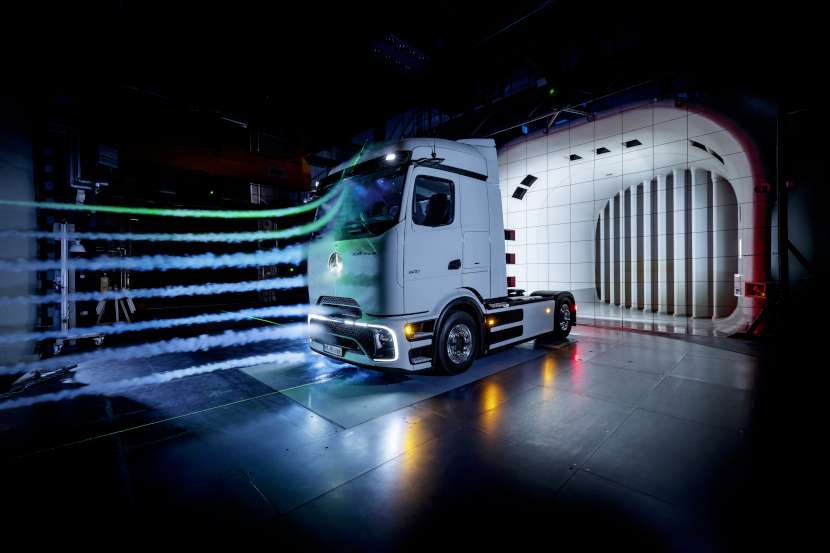Just take a look at everything that’s packed between the chassis rails of a 6×2 midlift tractor unit and you will see that there’s not a lot of empty space. The room that the extra axle takes up is significant and means that the fuel tanks of a 6×2 midlift are not as large as they can be on the 4×2 equivalent. This is not new information, but we have to look to the future to see what is coming given the impending demise of diesel power.
By 2040, no new diesel trucks will be sold in the UK and Europe (as long as the political will remains). This means that all new tractor units sold will have to be powered by battery, hydrogen or Biogas. Again, this is not new news. But, put the two pieces of information together and you will see that most of these new fuels will require more on-board storage space than the current diesel tanks and engine.
Long Haul Battery Electric Tractor Units on Sale
Mercedes have revealed their long-haul electric tractor unit, the eActros 600 in 4×2 guise. The investment in R&D to get this truck to series production stage must be staggering. For the company to rework the whole layout to try and squeeze sufficient battery power in addition to a 6×2 midlift axle could surely not be cost effective? The UK is about the only country that uses this 6×2 format for the prime mover to get to 44 tonnes – the continentals use a drawbar ‘wagon and drag’ at these weights where the problem of on-chassis storage is reduced thanks to the longer wheelbases.
The EU to the Rescue?
If the battery technology will not work with a 6×2 tractor unit at 44 tonnes operators choosing these trucks prior to 2040, then they will have to operate as 4×2 trucks.
Without government intervention, electric tractor units would be further disadvantaged compared to their 6×2, 44 tonne diesel rivals – especially prior to the 2040 deadlines for the banning of diesel trucks.
The good news is that the EU, (an organisation to which the UK no longer belongs,) put together a Weights and Dimensions proposal in July this year which aims to increase the weight allowance of heavy duty trucks from the pre-agreed (and insufficient) 2 tonnes to 4 tonnes. This could mean that a 4×2 battery tractor unit could run at the same Gross Train Weight (GTW) as a 6×2 diesel version in the UK, if we adopted the proposal. Despite this, it is likely that the electric truck will still suffer from a weight penalty.
Whilst Mercedes have not released an unladen weight figure for their eActros 600, they indicate that there will be a payload of around 22 tonnes at 44 tonnes GTW. Take an example of a low weight Volvo FH 6×2 and tri-axle tipping trailer with a 29.5 tonne payload and you will see that the electric tractor unit must be somewhat weighty.
UK Weights & Dimensions
Remember, the UK government can choose to row its own boat on weight legislation (is has up to now with the 44 tonne combination in any case). Will it follow the EU line? Of course, the government could decide to financially penalise diesel truck operators to help battery trucks compete, perhaps through road user charging, higher diesel fuel duty or similar.
In all likelihood, our UK Government have too many other things to occupy their time than worrying about trivialities like this – until the week before everything hits the fan, that is.

